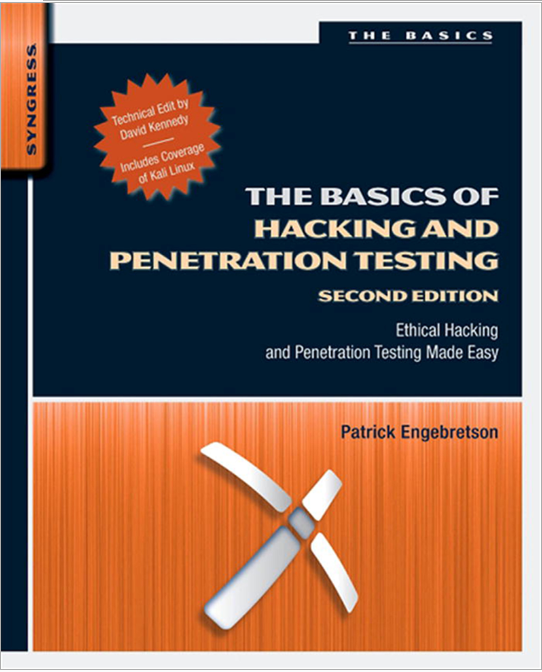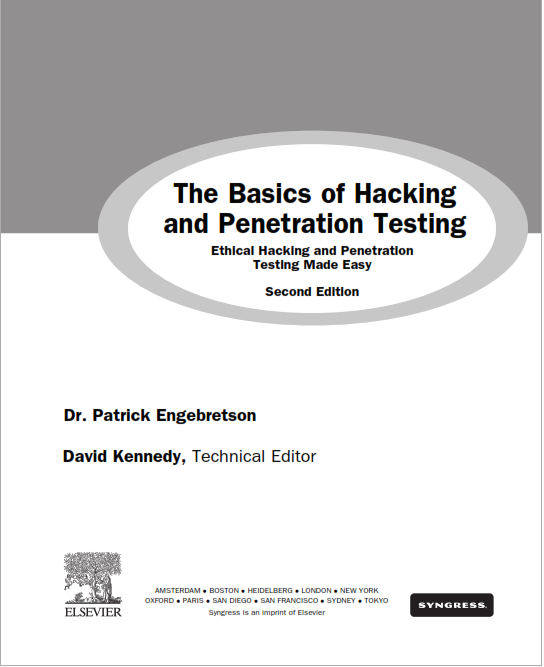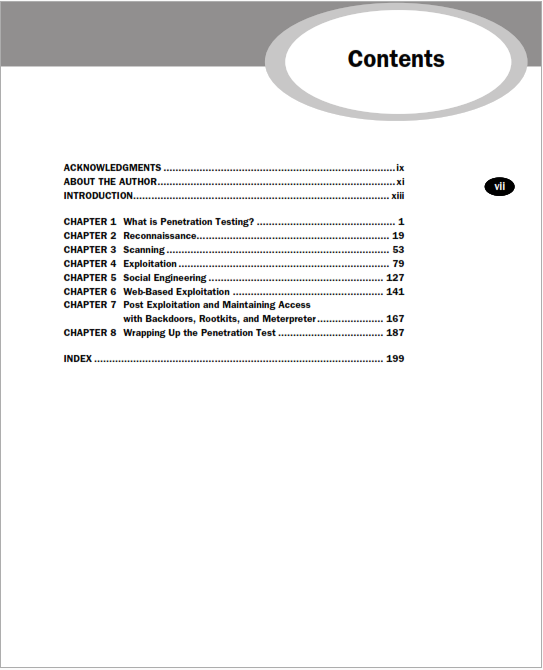




Patrick Engebretson-The Basics of Hacking and Penetration Testing, Second Edition_ Ethical Hacking and Penetration Testing Made Easy-Syngress (2013)
Patrick Engebretson-The Basics of Hacking and Penetration Testing, Second Edition_ Ethical Hacking and Penetration Testing Made Easy-Syngress (2013); Second Edition; 223 pages.
It is hard to believe that it has already been two years since the first edition of this
book. Given the popularity and (mostly positive) feedback I received on the
original manuscript, I admit I was anxious to get the second edition on the
shelves. It is not that the material has changed drastically. The basics of hacking
and penetration testing are largely still “the basics”. However, after completing
the first edition, interacting with readers, and listening to countless suggestions
for improvement from family, friends, and colleagues, I am confident that this
edition will outshine the original in nearly every facet. Some old (out-of-date)
material has been removed, some new material has been added, and the entire
book received a proper polishing. As with most people in the security community,
I have continued to learn, my teaching methods have continued to
evolve, and my students have continued to push me to provide them with ever
more material. Because of this, I have got some great new tools and additions
that I am really excited to share with you this time around. I am grateful for all
the feedback I received for the first edition and I have worked hard to make sure
the second edition is even better.
As I began to prepare the second edition, I looked closely at each chapter to
ensure that only the best and most relevant material was included. As with many
second editions, in some instances, you will find the material identical to the
original, whereas in others, the material has been updated to include new tools
or remove out-of-date ones. But most important to many of you, I have included
plenty of new topics, tools, and material to cover the questions which I get asked
about most often. As a matter of quality control, both Dave Kennedy and I
worked through each example and tool in the book and updated each of the
screenshots. The book has also been written with full Kali Linux support.
I would like to thank all the previous readers who sent in questions and corrections.
I have been sure to include these updates. Regardless of whether you are
picking this book up for the first time or you are returning to pick up some
additional tools, I am confident that you will enjoy the new edition.
As I mentioned at the beginning of the first edition, I suppose there are several
questions that may be running through your head as you contemplate reading
this book: Who is the intended audience for this book? How this book is different
than book ‘x’ (insert your favorite title here)? Why should I buy it? What
exactly will I need to set up in order to follow along with the examples? Because
these are all fair questions and because I am asking you to spend your time and
cash, it is important to provide some answers to these questions.
xiii
For people who are interested in learning about hacking and penetration testing,
walking into a well-stocked book store can be as confusing as searching for
“hacking” tutorials on the Internet. Initially, there appears to be an almost
endless selection to choose from. Most large bookstores have several shelves
dedicated to computer security books. They include books on programming
security, network security, web application security, mobile security, rootkits,
malware, penetration testing, vulnerability assessment, exploitation, and of
course, hacking. However, even the hacking books seem to vary in content and
subject matter. Some books focus on using tools but do not discuss how these
tools fit together. Other books focus on hacking a particular subject but lack the
broad picture.
This book is intended to address these issues. It is meant to be a single, simple
starting point for anyone interested in the topic of hacking or penetration
testing. The text you are about to read will not only cover specific tools and
topics but also examine how each of the tools fit together and how they rely
on one another to be successful. You will need to master both the tools and
the proper methodology (i.e. “order”) for using the tools in order to be successful
in your initial training. In other words, as you begin your journey, it is
important to understand not only how to run each tool but also how the
various tools relate to each other and what to do when the tool you are using
fails.
Happy reading, Cheers!

